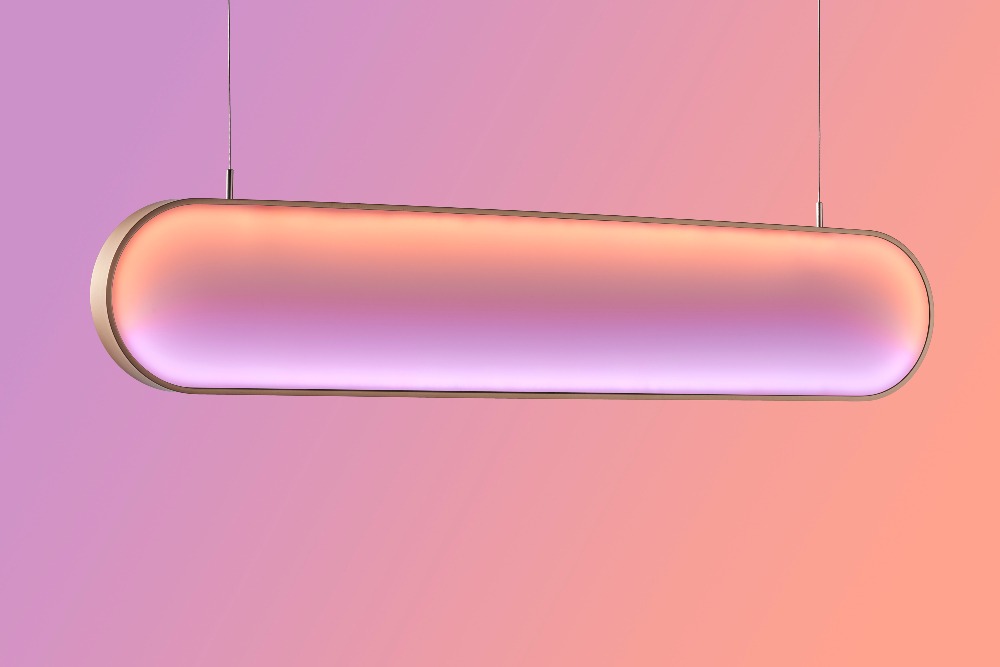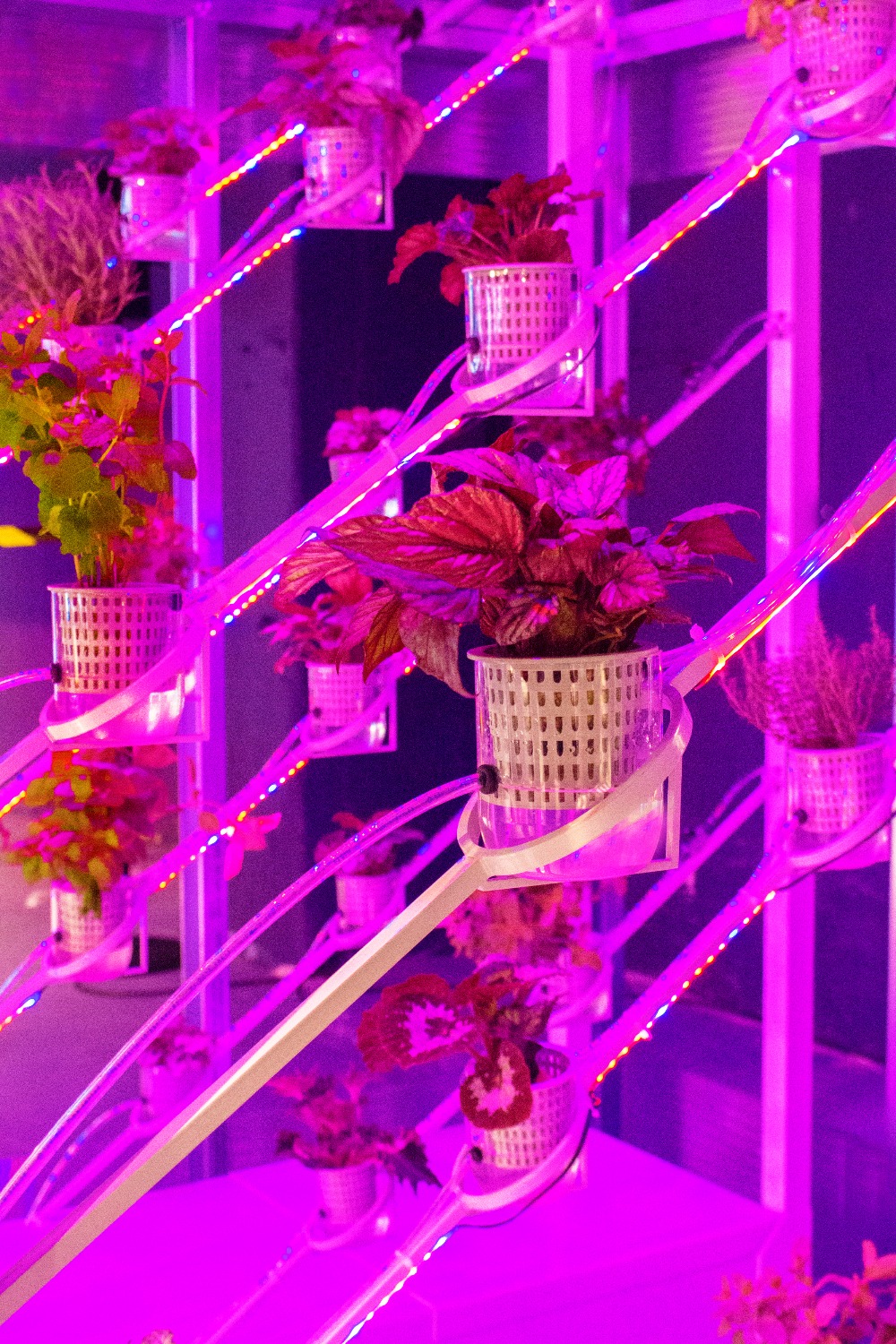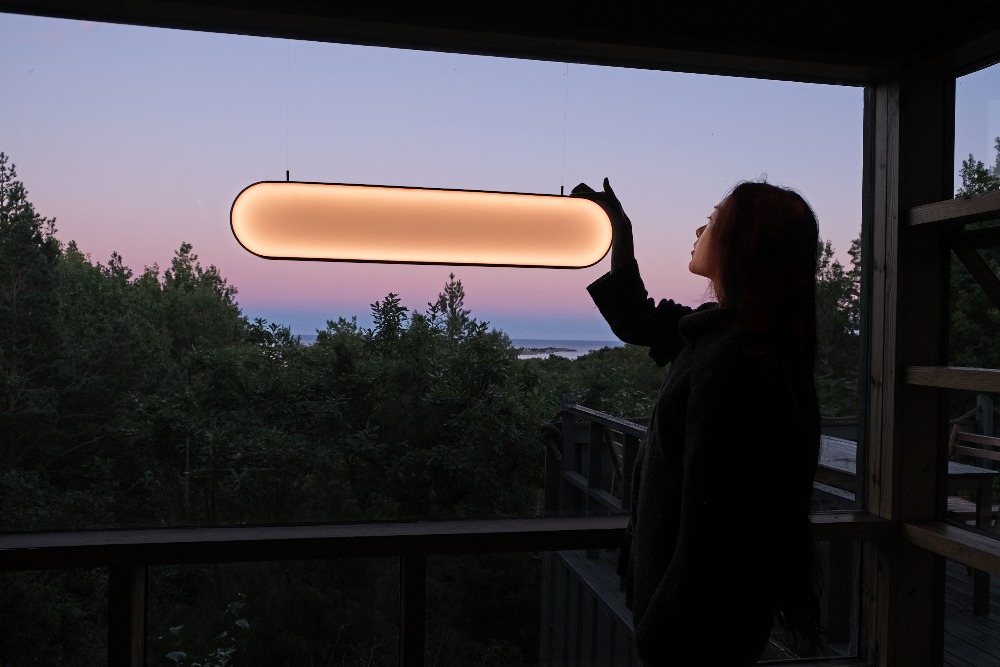The Dutch designer Marjan van Aubel is advancing the transition towards a world where everything will be powered by solar energy. While the computer and coffee machine in her studio in Amsterdam still run on a mix of renewable and conventional energy sources from a green energy provider, her vision is that in ten years’ time, conventional energy sources will largely be replaced by renewables, above all solar. Her ambient light Sunne points into this direction.
Interview by Karianne Fogelberg.
Marjan, together with Pauline van Dongen you initiated the Solar Movement, which comes with the world’s first Solar Biennale and its own manifesto. One claim of the manifesto is: “Let’s make the technology colorful, soft, cuddly, pliable, invisible, modular, full of playful patterns.” In how far is this a critique of solar technology as we have known it before?
Nowadays, solar energy is still mainly associated with the unappealing blue squares that stick out on the roofs of houses or are arranged in gigantic solar parks, which are great for harvesting energy, but it would be even better to integrate solar energy into our daily lives. Everyone wants to live in a beautiful environment, in public spaces but also at home, and the supply of well-designed objects powered by solar energy is small. Solar energy is still mainly associated with its technical aspects. We are surrounded by surfaces everywhere, so why not use them and design objects that are beautiful and have an emotional value? If solar energy is integrated well, if it is “soft, cuddly, modular and playful”, more people will use it and make it a part of everyday life.

Where do you see the contributions of designers in this venture?
You mentioned Pauline, her work is a good example. The solar textile Suntex, which she developed with her studio, has great potential. Organic thin-film photovoltaics are woven into textiles, creating a very light and flexible material that can be used in many different areas. It can be attached to facades and used as shading structures, but also in interior design. There are also experiments and trial projects being conducted by various research groups with solar paint that are very promising. The paint can be used just like the paint we know, but at the same time it generates electricity.
Many novel solar devices have been released recently, among which cheap gadgets like solar powered garden lights or portable fans. Do they help or hinder your agenda?
Every solar product helps if it is designed and produced well, works properly and sparks interest in solar energy. The widespread availability and use of solar-powered products can help to create a cultural shift, making solar energy a more familiar and accepted part of our lives. As more people incorporate solar technology into their homes and routines, it becomes increasingly ‘normal’ to rely on renewable energy sources. I also think that the diversity of solar products is essential in reaching a broader audience. By catering to different tastes, preferences, and price categories, solar products become accessible and appealing to a wider range of people. This inclusivity ensures that solar energy is not limited to a select few but can be used by people from various backgrounds and with different needs. Besides the benefit to consumers, having many solar products available can stimulate innovation within the design and manufacturing industries, too. If solar products become a success and demand is high, it can inspire not only designers but also entrepreneurs and entire industries to integrate solar energy into their own projects and products.

You call yourself a solar designer. With solar design being a recent term, when do you think will it have become a household name like automotive design or furniture design? What steps need to be taken to get there?
Solar products are on the rise. The more people who design with solar energy, the better. I’m not sure if it will develop into a term like furniture design or automotive design because of its specificity. I rather think solar energy can and should be integrated so well that it will become part of the different design categories such as automotive and furniture design. If ‘solar design’ eventually becomes a household name, all the better.
The sun is shining at no cost. While it is true that solar energy is available for free and in abundance, how about the costs of producing, installing, maintaining and finally eventually reusing or disposing of solar cells?
When the first photovoltaic systems were introduced, they were quite expensive. However, with advances in their mass production and improved technology, solar cells have become a lot more affordable. The progress in the last few decades has been huge. Today, solar cells are widely accessible and used everywhere. Much is also being done to address the challenge of reusing and disposing of solar cells at the end of their life span. This depends on the way they are manufactured. If they can be broken down into their basic components, they can be reused, which not only makes them more sustainable, but can also reduce costs. There is still a lot to do, but I think we are on the right track.
And how about the energy and materials required for manufacturing solar cells?
The production of solar cells still requires a lot of energy and special materials, and it is important to find good solutions for this. With advances in manufacturing processes, more efficient solar cell designs and the use of renewable energy sources in production, their payback time has steadily decreased. This means that solar cells can offset their initial energy investment relatively quickly and produce clean energy for many years. There has also been progress in the efficiency of the production process itself and in new developments such as thin-film solar cells, which require fewer materials than conventional silicon-based cells.

The shift to renewable energies may come in conflict with other objectives equally directed at climate change. For example, the installation of solar panels is being discussed in controversial terms with regard to its effect on biodiversity. In how far can your work provide answers to this?
This is the whole point! We have to change the narrative of solar, and make it part of our built environment. By integrating renewable energy more into our infrastructure, houses and public spaces, it doesn’t have to interfere anymore with the living spaces of plants and animals. There are many surfaces around us that we don’t use and here, solar energy can even create additional benefits. There are already a lot of research projects and trials. On car parks, for example, the roofs can provide shade but also function as energy generators at the same time. If we make solar energy more beautiful and flexible, we can have many more possibilities and don’t have to disturb animal and plant life.
Your first commercially available product is Sunne, a self-powered, free-hanging ambient light. By day, it harvests energy from the sun while it hangs by your window. At night, it brings the stored light indoors. Are solar-powered devices destined to bring us back in tune with nature and its rhythms in a biophilic sense?
They don’t have to be biophilic by default. Solar design can also become invisible if integrated well. It all depends on the design and area of use. However, personally I think the idea of solar energy bringing us closer to nature is beautiful. With Sunne, we wanted our first product to be poetic in that way. A light is also the most symbolic object when it comes to translating sunlight into energy supply in the house. We literally wanted to bring the sun inside people’s homes, therefore we chose to create three settings that resemble the natural course of the sun – Sunne Rise, Sunne Light and Sunne Set. We hope that it makes people reflect on how beautiful it can be to use solar energy at home and spark interest in the technique behind it.

Information about Marjan van Aubel: https://marjanvanaubel.com/
More on ndion
More Articles on the topic of design.
Share this page on Social Media:

